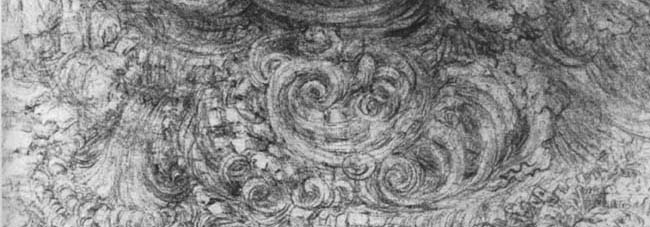No previous geological era or epoch includes humans in its definition, and in the scales of geological time, the appearance of homo sapiens on the global stage is a mere blip. The human self-image that unfolds in the modern period has insisted on a separation between homo sapiens and the world, between nature and culture. The concept of the Anthropocene is a challenge to that peculiar form of narcissism. Human societies and their material artifacts are evaluated just like other events in the history of the Earth. The claims to human exceptionalism are set aside. A single geo-history replaces the two accounts of life on earth: natural history and human history.
Read MoreThe phase space of a particular dynamical system is partitioned into one or many basins of attraction , perhaps intimately intertwined, each with its own attractor .
basins of attraction for a pendulum swinging over three magnets. (from Peitgen, Jürgens, and Saupe, Chaos and Fractals)
Read MoreSome different mathematical notions of dimension are: correlation dimension, embedding dimension, topological dimension, Hausdorff dimension, fractal dimension, self-similarity dimension, box-counting dimension, capacity dimension, information dimension. (see scientific space)
Read More
![fractals]()
The classic example used by Benoit Mandelbrot to introduce the fractal geometry of Nature is the question: How long is the coastline of Britain? Imagine measuring the coastline with a meter-long stick. This act of measurement would make an approximation of the coastline consisting of a finite number of meter-long straight lines and would give us one result. If we went back with a 50cm long stick and remeasured, we would get a total more than twice the first. As our unit of measure became smaller, the total length would increase without bounds. Our answer to the question would be that the length is scale dependent and increases without bound as the scalar unit becomes smaller. However, the "roughness" of the coastline seems to remain constant at every scale. Fractals have the same degree of irregularity at all scales of measurement. This roughness can be calculated as the log-log plot between the measured length and the reciprocal of the measuring unit, between "count" and "step" (see fractal dimension)
Read MoreThe Mandlebrot set has been described as the "most complicated object in the world." The figure represents the boundary of the domain of attraction of the behaviour of a simple equation in the complex plane. It is not the domain of attraction of a single system but rather a map of a family of systems, based on a single criterion.
Read MoreSensitivity to Initial Conditions: An extremely small change in the initial conditions of a chaotic or non-linear system leads to extremely differing results. Any arbitrarily small interval of initial values will be enlarged significantly by iteration. This is the so-called "butterfly effect" in which the flapping wings of a single butterfly could theoretically make the difference whether or not a hurricane occurred in another place and time. (The title of a paper by Edward N. Lorentz was "Can the flap of a butterfly's wing stir up a tornado in Texas?"
Read More


